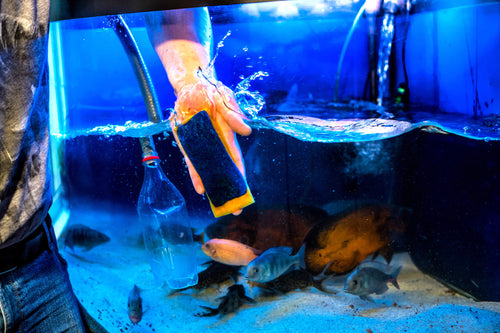Index Surge: Amplifying Your Insights
Stay updated with the latest trends and news across various industries.
Aquarium Bliss: Secrets to Keeping Your Underwater World Thriving
Discover the secrets to a thriving aquarium! Unlock expert tips for maintaining your underwater paradise and watch your fish flourish.
Essential Water Parameters for a Healthy Aquarium: A Beginner's Guide
Setting up a thriving aquarium requires more than just filling a tank with water and adding fish; understanding the essential water parameters is crucial for maintaining a healthy aquatic environment. Key factors such as pH levels, ammonia, nitrites, and nitrates play an integral role in ensuring that your fish and plants can thrive. For beginners, it is vital to monitor these parameters regularly. A balanced pH level typically ranges from 6.5 to 7.5, while ammonia and nitrite levels should ideally be at 0 ppm to prevent harmful effects on fish health.
Another important aspect ofaquarium care is understanding the hardness and mineral content of your water, which influences the overall health of your aquatic life. Water hardness is categorized into two types: general hardness (GH) and carbonate hardness (KH). GH measures the overall concentration of minerals in the water, while KH indicates the water's buffering capacity, which helps stabilize pH levels. Regular testing with a reliable aquarium test kit can help you maintain these water parameters within the recommended ranges. Staying vigilant about these factors can mean the difference between a bustling tank and one struggling to support its inhabitants.

Common Fish Diseases and How to Prevent Them
Understanding common fish diseases is crucial for any aquarist, as it helps in maintaining a healthy environment for your aquatic pets. The most prevalent diseases include Ich (Ichthyophthirius multifiliis), which is characterized by white spots on the fish's body, and fin rot, a bacterial infection that deteriorates the fins. Other notable diseases are dropsy, identifiable by a swollen abdomen, and velvet disease, which causes a dusty appearance on the fish's skin. By recognizing these symptoms early, you can significantly increase your fish's chances of recovery.
Preventing common fish diseases involves several proactive measures. First, ensure that the water quality is optimal by regularly testing pH, ammonia, nitrite, and nitrate levels. Frequent water changes can also help in diluting harmful toxins. Additionally, quarantine new fish for at least two weeks before introducing them to your main tank to avoid the spread of diseases. Regularly monitoring your fish for any unusual behaviors or physical signs, along with maintaining a balanced diet, will fortify their immune systems and help prevent outbreaks.
How to Create a Stunning Aquascape: Tips for a Beautiful Underwater Landscape
Creating a stunning aquascape involves careful planning and an understanding of both aesthetics and the needs of aquatic life. Begin by choosing the right aquarium size that complements your space and fits your vision. Next, consider the layout; a well-designed aquascape typically follows the Rule of Thirds, where you divide your tank visually into three sections, providing balance and depth. Incorporate various plants and hardscape materials like rocks or driftwood to create natural habitats and visual interest. To enhance the overall beauty, use plants of different heights and textures to add layers and draw the viewer’s eye throughout the landscape.
When it comes to assembling your aquascape, pay attention to water parameters and soil types to ensure that you provide a suitable environment for your chosen plants and fish. Regular maintenance is essential; trimming plants not only encourages growth but also keeps your landscape looking pristine. Consider incorporating lighting strategies to highlight key features of your aquascape—different types and intensities of light can dramatically affect the ambiance of your underwater landscape. Lastly, experiment with placement and design until you achieve a harmonious and stunning aquascape that showcases the beauty of aquatic life.